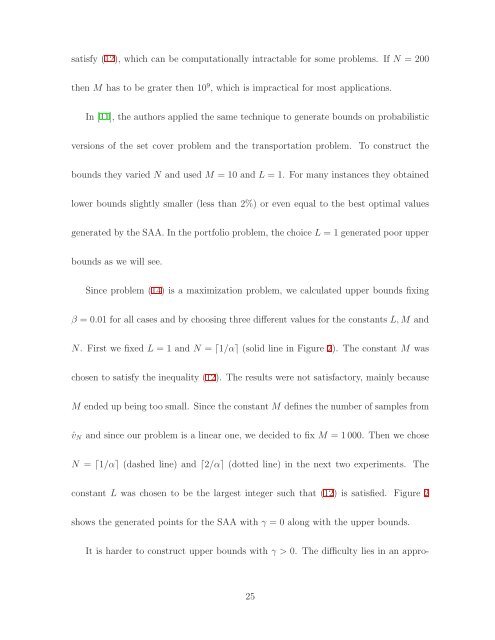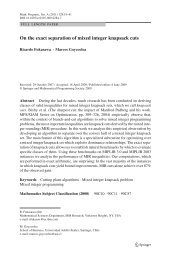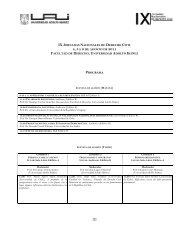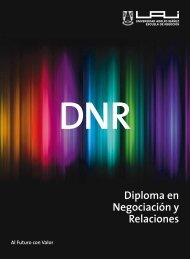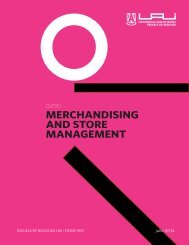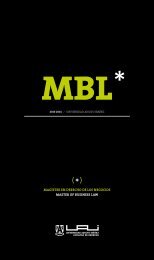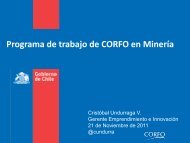Sample Average Approximation Method for Chance Constrained ...
Sample Average Approximation Method for Chance Constrained ...
Sample Average Approximation Method for Chance Constrained ...
- No tags were found...
Create successful ePaper yourself
Turn your PDF publications into a flip-book with our unique Google optimized e-Paper software.
satisfy (12), which can be computationally intractable <strong>for</strong> some problems. If N = 200then M has to be grater then 10 9 , which is impractical <strong>for</strong> most applications.In [11], the authors applied the same technique to generate bounds on probabilisticversions of the set cover problem and the transportation problem. To construct thebounds they varied N and used M = 10 and L = 1. For many instances they obtainedlower bounds slightly smaller (less than 2%) or even equal to the best optimal valuesgenerated by the SAA. In the portfolio problem, the choice L = 1 generated poor upperbounds as we will see.Since problem (14) is a maximization problem, we calculated upper bounds fixingβ = 0.01 <strong>for</strong> all cases and by choosing three different values <strong>for</strong> the constants L, M andN. First we fixed L = 1 and N = ⌈1/α⌉ (solid line in Figure 2). The constant M waschosen to satisfy the inequality (12). The results were not satisfactory, mainly becauseM ended up being too small. Since the constant M defines the number of samples fromˆv N and since our problem is a linear one, we decided to fix M = 1 000. Then we choseN = ⌈1/α⌉ (dashed line) and ⌈2/α⌉ (dotted line) in the next two experiments. Theconstant L was chosen to be the largest integer such that (12) is satisfied. Figure 2shows the generated points <strong>for</strong> the SAA with γ = 0 along with the upper bounds.It is harder to construct upper bounds with γ > 0. The difficulty lies in an appro-25


